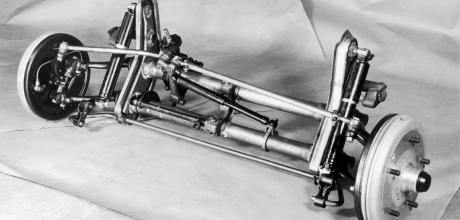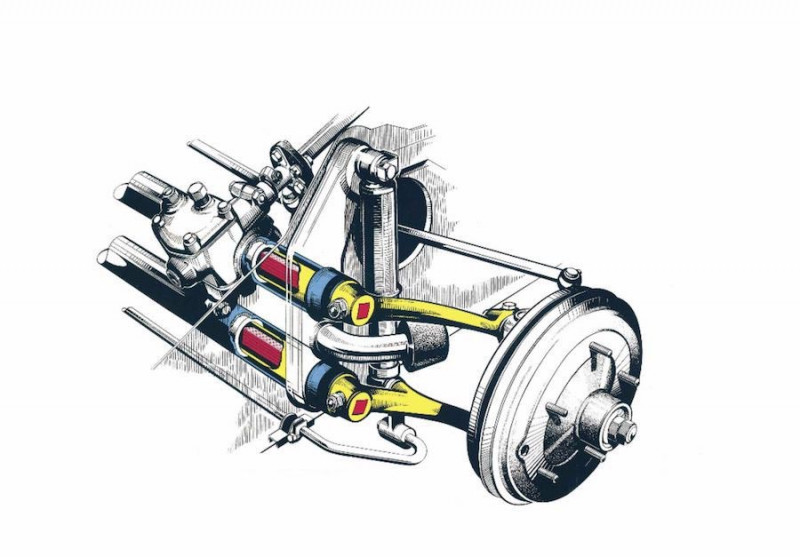Technology explained - torsion bar suspension

We take a quick look back at the history and development of the torsion bar suspension system
Despite the many complex technological advances, features and systems used over the lifespan of the 911, one vital element of the car relied on a simple, mechanical system for over 40 years – the use of torsion bar suspension.
Invented by Ferdinand Porsche, he patented the system in 1931, when suspension designs typically relied on crude leaf spring systems more akin to horse and cart technology than sports cars. Torsion bars in comparison were smaller, neater, lighter and more comfortable, aiding traction and reducing roll. Porsche’s torsion bar idea was first used by Ferry Porsche in 1948 for the 356, as well as in prototypes and race cars. The 356 sports car design was modified for the later 911, where wishbones were used on the front axle.
The system comprised little more than a long, circular bar, splined at each end, to which is fixed either body or suspension. As the suspension is pushed up by bumps in the road, so the suspension arm moves. Affixed to the end of the torsion bar by the splines, the suspension movement applies a twisting force to the torsion bar, which resists, thereby offering a sprung resistance. The greater the load, the stronger the spring effect, and firmer the suspension.
At the front, the 911 uses a pair of torsion bars; one for each side, mounted longitudinally on the car, and sided for use, left- or right-hand side. The front of each torsion bar is fixed on the suspension control arm, the rear is fixed to the body. To set ride height, an adjuster screw alters the preload, thereby raising or lowering the body at each adjuster. An extra rubber spring was used to effect the last third of suspension movement – intended to prevent the suspension bottoming out at full travel.
On the rear, the system is slightly different as a single torsion bar is mounted transversely, and fixed at each end with a spring plate.
For Porsche, their home-made solution brought everything they were looking for: simplicity, reliability, comfort and also lightness. The system was used from 1964 until 1989, when the 964 model changed to coilover shocks and aluminium A arms, partly to accommodate a four-wheel-drive system.


